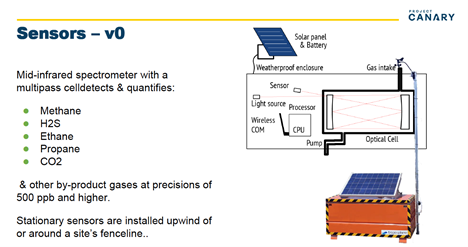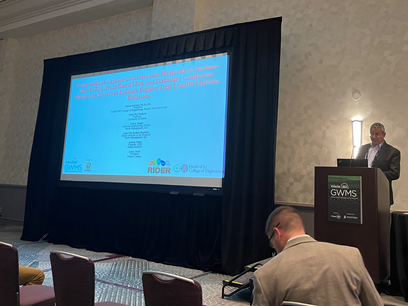Advancing Landfill Emissions Monitoring Technologies through Science
Flight patterns allow drones to complete a fully autonomous inspection that is comprehensive and repeatable. Science-Based Targets have emerged as a way to define a clear path towards limiting global warming that aligns with The Paris Agreement. In order to tackle these reductions, it is necessary to understand the generation of emissions and how they are being controlled at a landfill.
March 1, 2022

The reduction in greenhouse gas emissions is a common focus of sustainability efforts across the solid waste industry and continues to strengthen with the movement towards climate change mitigation. Science-Based Targets have emerged as a way to define a clear path towards limiting global warming that aligns with The Paris Agreement. In order to tackle these reductions, it is necessary to understand the generation of emissions and how they are being controlled at a landfill. This information hinges on modeling and measurement approaches in conjunction with landfill gas collection and methane oxidation. Understanding how to work towards emission reductions will rely on advancements in the science of monitoring technologies. These emerging technologies will provide additional insight into whole landfill emissions that can be translated to specific actions towards reductions and compliance.
The 2022 Global Waste Management Symposium brought together leading researchers to present on the advancements in Emissions Monitoring Technologies. The common theme among these presentations was finding a way to provide resilience against evolving regulations through more cost effective and accurate approaches that can be deployed more frequently. Dr. Anna Scott with Project Canary presented on a novel continuous monitoring approach aimed at improving the accuracy of whole landfill emissions measurements. Project Canary has developed continuous sensors that can be deployed at a landfill using an automated system with no labor required after installation. In addition, these sensors are able to overcome the challenges of diurnal, seasonal, and meteorological variations on measurement accuracy. Her work has demonstrated that it is feasible to conduct real-time monitoring of landfill emissions.

In addition to the development of real-time sensors for continuous measurements, the industry has seen the increased use of drones to quantify emissions. As part of the U.S. Environmental Protection Agency’s New Source Performance Standards (NSPS), landfills are required to conduct quarterly surface emission monitoring (SEM) events to ensure there are not any emission exceedances greater than 500 parts per million across the site. These measurements are traditionally taken by walking a specific path around a landfill using a handheld device four times per year. Dr. Tarek Abichou at Florida State University has coupled an existing ambient air SEM approach with a drone to reduce the time necessary to complete quarterly monitoring, improve measurement accuracy, and provide a comprehensive understanding of total emissions. Coupling the drone measurements with a tool called SEM2Flux, Dr. Abichou can map the methane concentrations across a landfill that takes into account meteorological conditions to determine the methane flux values. This drone-based approach was validated using conventional ground-based SEMs, Mobile Tracer Correlation Data, and continuous monitoring data from four sensors placed on the landfill. Additional work is being conducted to compare this approach to other techniques such as tracer tests as well as combining drone measurements with other continuous ambient concertation monitoring.

Dr. Andrew Aubrey with SeekOps Inc. discussed the deployment of another drone-based system that can be used for autonomous inspections of large areas, leak detection, and total emissions quantification. Using the SeekOps SeekIR, a high-resolution overview of the landfill can be generated, including a 3D digital elevation model to generate the flight profiles that will be executed during an inspection. These flight patterns allow the drone to complete a fully autonomous inspection that is comprehensive and repeatable. Once the drone has completed the inspection of the landfill, a methane concentration drone path map is generated, and the total emissions and strength are calculated.

Taking the drone measurements further, Dr. Michael Thorpe with Bridger Photonics developed a remote, laser-based methane sensor called Gas Mapping Lidar (shown below on the left) for the oil and gas industry. Gas Mapping Lidar can scan the entire area of interest with the goal of identifying methane hot spots and emission sources as well as estimate emission rates. This approach can be used with a manned aircraft or a drone. A Flux Curtain approach (shown below on the right) was specifically developed for whole landfill emissions monitoring by utilizing two drones at the same time. The two drones work together by measuring the methane concentrations across the line between them. The emission rate estimation error can be reduced to less than 10% by performing multiple flux curtains.

These novel measurement technologies provide a snapshot of broader efforts aimed at providing landfills with the approaches necessary to not only comply with current regulatory requirements, but also meet ambitious sustainability goals being set across the industry.
About the Author
You May Also Like


.png?width=300&auto=webp&quality=80&disable=upscale)